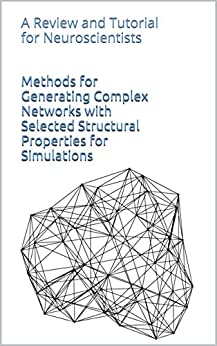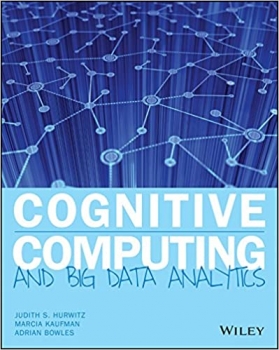Product details
- ASIN : B00XVCWTZ8
- Publication date : May 18, 2015
- Language : English
- File size : 2868 KB
- Print length : 69 pages
-
کتاب Methods for Generating Complex Networks with Selected Structural Properties for Simulations: A Review and Tutorial for Neuroscientists
Many simulations of networks in computational neuroscience assume completely homogenous random networks of the Erdös–Rényi type, or regular networks, despite it being recognized for some time that anatomical brain networks are more complex in their connectivity and can, for example, exhibit the “scale-free” and “small-world” properties. We review the most well known algorithms for constructing networks with given non-homogeneous statistical properties and provide simple pseudo-code for reproducing such networks in software simulations. We also review some useful mathematical results and approximations associated with the statistics that describe these network models, including degree distribution, average path length, and clustering coefficient. We demonstrate how such results can be used as partial verification and validation of implementations. Finally, we discuss a sometimes overlooked modeling choice that can be crucially important for the properties of simulated networks: that of network directedness. The most well known network algorithms produce undirected networks, and we emphasize this point by highlighting how simple adaptations can instead produce directed networks.
منابع کتاب کتاب Methods for Generating Complex Networks with Selected Structural Properties for Simulations: A Review and Tutorial for Neuroscientists
بسیاری از شبیهسازیهای شبکهها در علوم اعصاب محاسباتی، شبکههای تصادفی کاملاً همگن از نوع Erdös-Rényi یا شبکههای منظم را فرض میکنند، علیرغم اینکه برای مدتی مشخص شده است که شبکههای مغز آناتومیک از نظر اتصال پیچیدهتر هستند و میتوانند برای مثال، «مقیاس» را نشان دهند. داراییهای رایگان و «جهان کوچک». ما شناختهشدهترین الگوریتمها را برای ساخت شبکههایی با ویژگیهای آماری غیرهمگن بررسی میکنیم و شبه کد سادهای را برای بازتولید چنین شبکههایی در شبیهسازیهای نرمافزاری ارائه میکنیم. ما همچنین برخی از نتایج ریاضی مفید و تقریبهای مرتبط با آماری را که این مدلهای شبکه را توصیف میکنند، از جمله توزیع درجه، میانگین طول مسیر و ضریب خوشهبندی بررسی میکنیم. ما نشان میدهیم که چگونه میتوان از چنین نتایجی به عنوان تأیید و اعتبار بخشی اجراها استفاده کرد. در نهایت، ما یک انتخاب مدلسازی که گاهی نادیده گرفته میشود را مورد بحث قرار میدهیم که میتواند برای ویژگیهای شبکههای شبیهسازی شده بسیار مهم باشد: جهتدهی شبکه. شناختهشدهترین الگوریتمهای شبکه، شبکههای هدایتنشده را تولید میکنند، و ما بر این نکته تأکید میکنیم که چگونه سازگاریهای ساده میتوانند در عوض شبکههای هدایتشده را تولید کنند.































ارسال نظر درباره کتاب Methods for Generating Complex Networks with Selected Structural Properties for Simulations: A Review and Tutorial for Neuroscientists